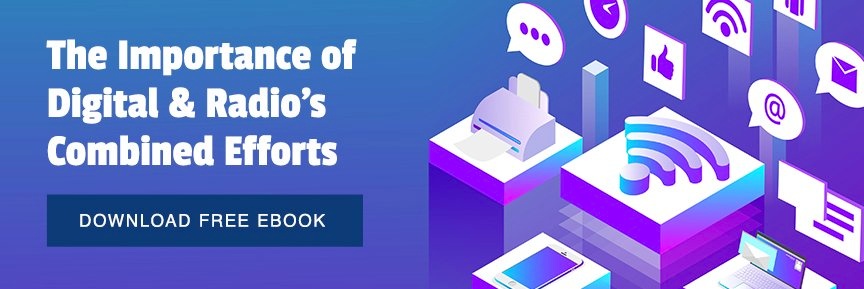With the 2020 elections just 15 months away, radio stations have a pitch of their own: Send more political ad dollars our way. With a combination of on-air, online and podcast advertising, radio can offer local, state and national candidates, and issue advertisers, the opportunity to reach highly engaged voters on multiple platforms.
In fact, among audio platforms, local radio is the most powerful way to reach potential voters, according to a report by Edison Research and radio network Westwood One. AM/FM radio reaches 80% of registered voters, compared to ad-supported Spotify, which reaches 4% of voters, and ad-supported Pandora, which delivers 3%. Podcasts connect with 7% of registered voters and local radio’s fast-growing menu of podcasts can help extend its reach with voters.
As candidates work to establish their names and positions, radio’s reach can help them connect with voters and break through the clutter. After all, radio is the country’s no. 1 reach medium with 93% of Americans tuning into local radio, per Nielsen, which is more than TV, smartphones and social media. Radio’s ability to deliver a massive pool of potential voters is attractive to candidates, regardless of their political persuasion. Among registered voters, Republics, Democrats and independents all listen to AM/FM radio, study noted.
However, heading into the 2020 elections, radio will have to fight to grow its share of dollars against digital media, cable, local TV and social media. There are considerable dollars at stake, with local political ad spending is expected to reach $6.55 billion in 2020, according to the latest forecast from BIA Kelsey. Broadcast TV is forecast to be the biggest winner with $3.08 billion, or 47% of ad spending. Radio will claim about 5% of that money, or about $312 million, while online grabs 21%, or $1.27 billion. Multichannel video providers, which includes cable and streaming services, are expected to take in $919 million, or 14% of all ad spending.
To grow political ad dollars, radio stations should emphasize their on-air and online assets. On-air radio offers political advertisers mass reach that can help build their brands and communicate their positions. Radio’s digital properties, including podcasts, can provide more targetability and niche audiences, which are also important for boosting voter engagement, fundraising and turnout. By emphasizing local radio’s growing digital menu of podcasts, mobile apps and websites, radio could siphon some political dollars away from other digital outlets, particularly among local candidates and ballot initiatives.
As more political ads flood airwaves and websites in the coming months, BIA notes there could be another boon for radio advertisers: Regular local advertisers who are priced out of their usual advertising outlets, such as local TV and local cable. Radio can court these displaced advertisers and grow their non-political ad revenue. And, if these clients have a positive experience, they could carry on as radio clients. By promoting its assets to both political advertisers and non-political clients, radio could indeed find a winning message.

